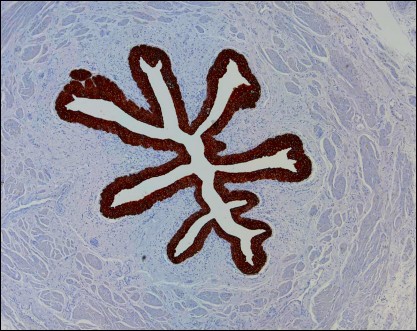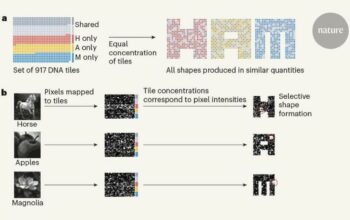In the microscopic world of microorganisms, bacteria exhibit a variety of fascinating behaviors. One captivating phenomenon is their ability to navigate and thrive in fluid environments, where they often face the daunting challenge of swimming against currents. This delicate balancing act raises an interesting question: how do these diminutive entities manage to forge ahead in a medium that regularly seeks to redirect their course? The answer lies in a confluence of biological adaptations, hydrodynamics, and behavioral strategies that illuminate the complexities of microbial motility.
To appreciate the intricacies of bacterial swimming against the current, one must first understand the dynamics of the microfluidic environments they inhabit. Microfluidics pertains to the manipulation of fluids at scales often measured in micrometers, which is the typical realm where bacteria operate. In these environments, the viscous forces predominate over inertial forces, leading to a regime where the movement of both fluid and organisms is governed by complex interactions. Bacteria, like Escherichia coli, utilize flagella—long, whip-like appendages that rotate to propel themselves forward—while simultaneously contending with the drag imposed by the surrounding fluid. This interplay between hydrodynamic forces dictates their swimming patterns and efficiency.
The mechanics of swimming in microfluidic streams presents specific challenges. When bacteria swim against a current, they must generate sufficient propulsion to overcome the resistance of the water. The flagella arrangement plays a crucial role here. In some species, the flagella work in concert, forming a bundle that creates a robust thrust, enabling the organism to push against the oncoming flow. Conversely, studies have shown that the orientation of the swimming direction significantly influences a bacterium’s ability to navigate effectively in turbulent conditions.
Intriguingly, bacteria also exhibit sophisticated behavioral responses to fluid motion. Chemotaxis, the movement towards or away from chemical stimuli, adds a layer of complexity to their swimming strategies. Bacteria can sense gradients of attractants or repellents in their environment, allowing them to modify their swimming direction. This ability to respond to chemical cues can significantly alter their swimming trajectory, enabling them to navigate around obstacles or toward more favorable conditions. Thus, while battling currents, bacteria engage in a dynamic interplay between motility and environmental cues. This synthesis of sensory perception with locomotion exemplifies the remarkable adaptability of microbial species.
Moreover, recent advances in microfluidic technologies have enabled researchers to simulate conditions that mimic natural bacterial habitats, providing insights into bacterial behavior in real-time. By utilizing microfabricated devices, scientists have observed the swimming patterns of bacteria subjected to controlled flows, leading to discoveries that challenge conventional understanding. For instance, under specific flow conditions, bacteria have been seen to exhibit swarming behaviors, coordinating their movements to overcome the challenges posed by the fluid stream. Such emergent behaviors further complicate the picture by introducing collective dynamics into individual swimming strategies.
Yet, the question remains: are these adaptations sufficient for bacteria to consistently forward their momentum against all types of currents? A notable challenge lies in the fact that crossflows and turbulence can drastically impede their effectiveness. The stochastic nature of these fluid dynamics can lead to unpredictable swimming patterns, often hampering a bacterium’s ability to maintain its course. While flagellar rotation can generate thrust, it may not always guarantee forward movement. Instances of bacteria getting trapped in eddies or being swept away by stronger currents highlight the limits of their motility strategies.
Furthermore, one might ponder the implications of these findings on our understanding of microbial ecosystems. The ability of bacteria to swim against currents facilitates their role in nutrient cycling and ecological interactions. By swimming toward nutrient-rich regions or areas devoid of toxins, bacteria can influence the balance of microbial communities. This adaptive capacity contributes to the overall health of ecosystems, demonstrating the interconnected nature of microscopic and macroscopic biological processes.
As researchers delve deeper into the mechanics of bacterial swimming, innovative methodologies continue to emerge. For instance, the application of computational fluid dynamics (CFD) allows for the simulation of bacterial motility within complex fluid flows, providing new insights into cell behavior. Coupled with genetic analysis, these approaches are paving the way for a comprehensive understanding of how microbes navigate their environments. This knowledge not only enriches the scientific discourse surrounding microbial motility but also holds potential applications in biotechnology and medicine.
In conclusion, the evolutionary adaptations enabling bacteria to swim against microfluidic currents showcase the incredible resilience of life at microscopic scales. While battling against the current presents formidable challenges, the interplay of physiological and behavioral strategies allows these microorganisms to persist and thrive. As ongoing research uncovers further details about the nuances of bacterial motility, it becomes increasingly clear that their struggles against fluid flows are not merely a curious aspect of biology; rather, they are fundamental to the role of bacteria in their ecosystems. Understanding these dynamics may ultimately lead to breakthroughs in fields such as environmental science, biotechnology, and medicine, revealing the vast implications of microscopic phenomena on life as we know it.










